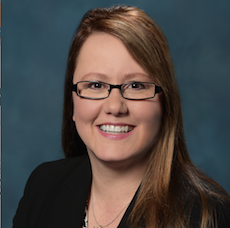
Fire and safety issues can present themselves at senior living communities any day of the year, said Stan Szpytek, but holiday seasons can be more problematic than other times because fewer staff members may be working and more resident family and friends may be visiting.
“When a greater number of visitors are in your buildings during the holidays, when a special party is occurring or where there’s some type of event occurring in your community, you’re always going to be at a higher risk of an emergency happening,” said Szpytek, who is the founder, president and CEO of Fire and Life Safety Inc., Mesa, AZ. “You’ve got to take that into account and be prepared for anything, because compliance does equal safety.”
Szpytek, a consultant to the American Assisted Living Nurses Association, recently shared fire prevention and safety tips during a webinar held by AALNA and Risk Resource Solutions. He’s retired from work as a fire chief, fire investigator and code enforcement official, among other positions, and now conducts mock surveys, looking for fire and safety issues in long-term care communities.
Communities may seek to create a home-like environment, strengthen employee relationships and cheer residents through decorating efforts, Szpytek said, but some commonsense approaches can lessen the chances of danger occurring on your premises. After all, he added, “Probably the most important commodity that you’re providing to those occupants who are in your care and in your environment is life safety and security.”
Some of the top potential hazards Szpytek said he sees in communities:
-
Flammable decorations. Check materials lists on packages of decorations. If you are unsure whether a decoration is safe, conduct some research before using it.
-
Live decorations. Live Christmas trees, wreaths and other greenery, or hay (for a manger, for instance) can dry out and burn. Prohibit them. “You’ll probably say, ‘Well, we don’t have those in our facilities,” Szpytek said. “Double-check. Make sure that you don’t have anybody bringing in any kind of live Christmas or holiday-type tree.”
-
Candles. Candles can lead to trouble when they are not watched, Szpytek said. Prohibit them. “When it comes to candles, we say we understand they’re not allowed, but what are our residents doing? What kind of gifts are they receiving from family, friends and others?” he said. “You’ve got to keep reminding your residents that they should not be using any kind of open flame device.”
-
Blocked exits and exit signs. Don’t block exits or exit signs with decorations or other items.
-
Obstructed sprinkler heads, smoke detectors and heat detectors. Don’t obstruct detectors, sprinkler heads or any of the elements of the assembly. “That sprinkler head in the threshold of the apartment might look like a good place to hang mistletoe, but trust me, it is not,” Szpytek said.
-
Crowded or inappropriate storage. Be mindful of where you store decorations or items (such as furniture or oxygen cylinders) that you have relocated due to holiday decorating efforts. Keep stairwells, hallways, electrical rooms and other areas accessible and neat. “If you have electrical equipment in combination areas, you need to provide at least 36 inches of clearance around all of that electrical equipment, the circuit breakers and so forth,” Szpytek said. Nothing should be stored in a stairwell, he added.
-
Use of extension cords and plugs to modify duplex electrical outlets. Staff members and residents should not use extension cords or plugs designed to add more capability to an outlet. “They’re commercially available at many retail outlets, but they’re not suitable for the regulated environment,” Szpytek said. “In a nutshell, they’re overloading the circuit and they’re a potential fire hazard.”
-
Obstructed fire extinguishers and fire alarms. Don’t obstruct access to fire extinguishers or fire alarms with decorations or other items.
-
Open or ill-fitting doors. Keep doors closed, and make sure doors fit snugly in their frames when closed, to prevent smoke and fire from spreading in an emergency.
-
Obstacle-like furniture. Make sure furniture isn’t placed in a way that prevents a door from opening or closing or prevents an easy exit from a room.
-
Missing emergency preparedness plans. Szpytek recommends that communities create all-hazard emergency preparedness plans. “Your disaster plans need to accommodate all disasters, whether it’s active shooter, fire, flood, power failure, wildfire,” he said.
-
Lack of training. Ensure that staff members are familiar with your emergency preparedness plan and receive periodic training, tests and drills related to it, including training and testing on the use of a fire extinguisher.
Think none of this applies to your community? “Take a gander around your facility, and I think you’re going to be surprised, particularly around the holidays,” Szpytek said.
“The bottom line is, if it looks unsafe, it generally is unsafe,” he concluded. “As a caregiver, administrator or maintenance technician, make sure that you’re integrating some safety into the decorations that are being utilized at your facilities. It’s a balancing act. You want to create that festive environment, but you’ve got to do it in a way that’s compliant. You’ve got to make sure that paths of egress are open. You’ve got to make sure that your fire protection systems are uncompromised.”
Lois A. Bowers is senior editor of McKnight’s Senior Living. Follow her on Twitter at @Lois_Bowers.



